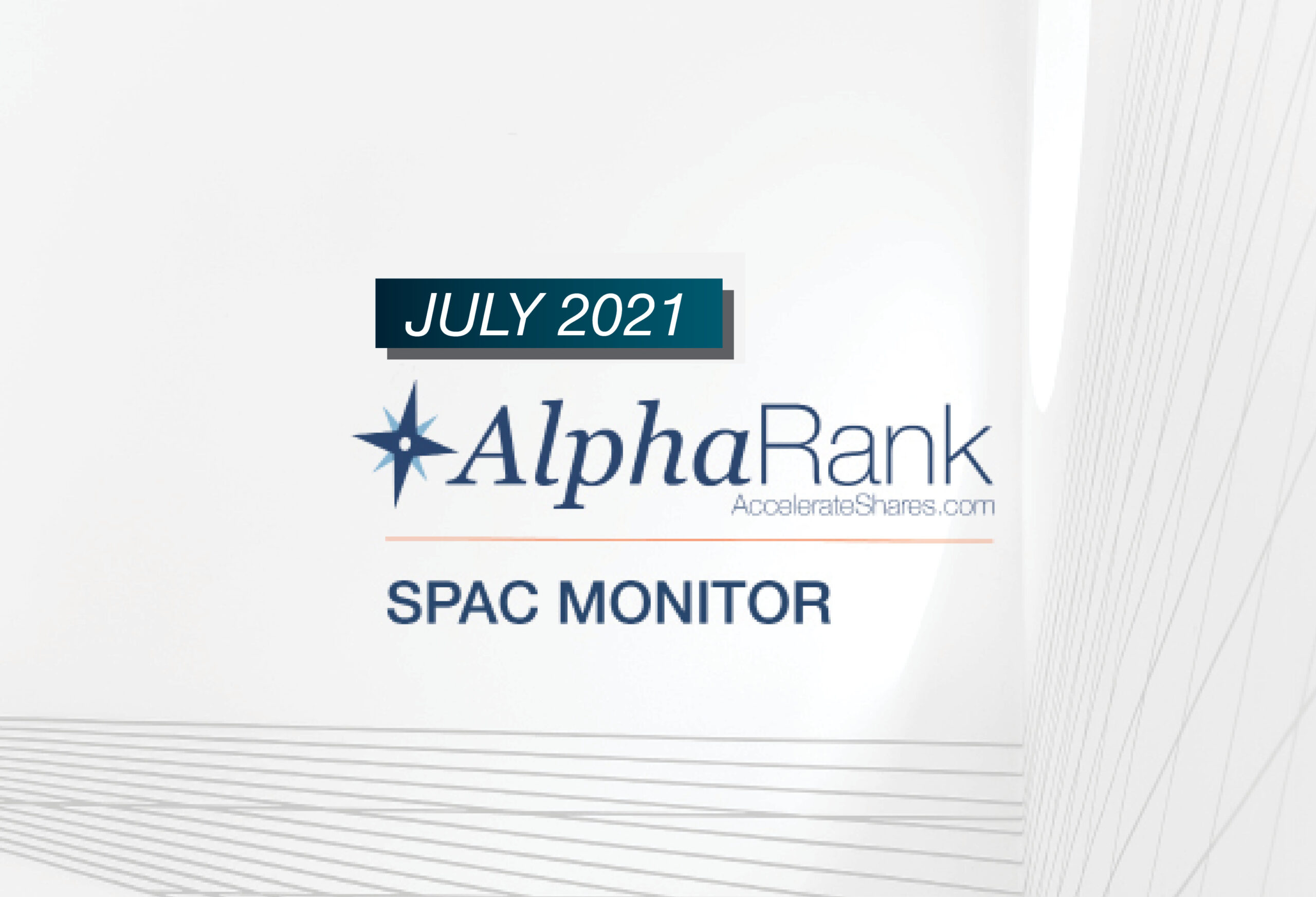July 22, 2021 – In a world starved for yield, SPAC arbitrage stands out as one of the most attractive low-risk strategies to generate yield.
Since peaking at 1.75% in March, the 10-Year U.S. Treasury yield has fallen to just 1.25%. To most investors, an interest rate of 1.25%, with little upside potential, is insufficient given the duration risk in an inflationary environment.
In contrast, since bottoming at a stunning negative -4.0% in February, SPAC arbitrage yields have increased to 1.7%.

The current average 1.7% yield priced into SPACs matches the level from April 2020, when world markets were still in a Covid-induced bear market and valuations for nearly all asset classes were materially lower.
Given that SPACs represent a discounted T-Bill plus an equity call option, fixed income investors should be keenly aware of the yields offered by SPACs in comparison to other fixed income alternatives.

The average SPAC trades at a -1.2% discount to the redeemable T-Bills it holds in trust, and at a -2.1% discount on a median basis. This current discount to trust value compares to an average 6.5% premium over the past year, back when investors ascribed upside optionality to the equity portion of a SPAC.
Many investors wonder, “Given the precipitous decline of yields in traditional fixed income, why are SPAC arbitrage yields so attractive?”
We believe SPAC arbitrage yields have increased to attractive levels, given their low-risk nature, for several reasons:
- Underfollowed – SPACs are a relatively new and underfollowed asset class. The majority of investors still do not know that a SPAC represents a zero-coupon T-Bill plus an equity call option, and therefore are unaware of the asset class as an option for fixed income allocations.
- Poor sentiment – Since peaking in February, the SPAC Index is down -11.8%. The SPAC Index is up only 2.7% year-to-date, materially underperforming other asset classes. Despite SPACs outperforming their most comparable asset class, cash, investor sentiment toward blank checks remains apathetic.
- Flat performance for months – The SPAC Index has been flat for the past four months. As a result, many SPAC investment funds have received redemptions and have been forced to sell their holdings at material discounts.
- Oversupply – Since the first quarter, the asset class has been oversupplied with new issues. The SPAC bear market occurred mainly due to excess supply, as blank check IPOs far exceeded demand. While the net SPACs outstanding has remained flat for the past two months as IPO issuance has matched the number of deSPACs, a net decline would help the market work through the oversupply and begin to rally.

- Lack of volatility – The SPAC market was frenzied in the first quarter, as the volatility of the blank check market attracted the Reddit-fueled speculator crowd. Since then, the equity optionality within SPACs has gone from highly valued to negatively-valued, leaving SPACs priced only as discounted T-Bills that are attractive to arbitrageurs and other fixed income investors. Short-term T-Bills are a relatively stable asset and therefore, speculators do not have much interest.

- No Fed Manipulation – The Federal Reserve continues its purchases of $80 billion a month in Treasury bonds and $40 billion in mortgage-backed securities. This has the direct impact of lower yields of these securities, and the indirect effect of lower yields of related securities such as corporate bonds. SPAC yields remain unaffected by this Fed market manipulation.
There are several reasons why SPAC arbitrage yields remain unusually high, leaving investors an opportunity to potentially bolster their fixed income portfolios at cyclical lows. Regardless, enterprising investors should consider the asset class as a cash replacement given how much of an increase in yield one can earn by swapping cash for discounted SPACs to redeem for trust value.
The Accelerate AlphaRank SPAC Monitor details various metrics on the current opportunity set while offering details on every individual SPAC currently outstanding. The Accelerate AlphaRank SPAC Effective Yield tracks the average arbitrage yield offered in the market. The Accelerate AlphaRank SPAC Index tracks the price return of the SPAC universe.



* AlphaRank is exclusively produced by Accelerate Financial Technologies Inc. (“Accelerate”). The Accelerate Arbitrage Fund may hold a number of securities discussed in this research. Visit AccelerateShares.com for more information.



